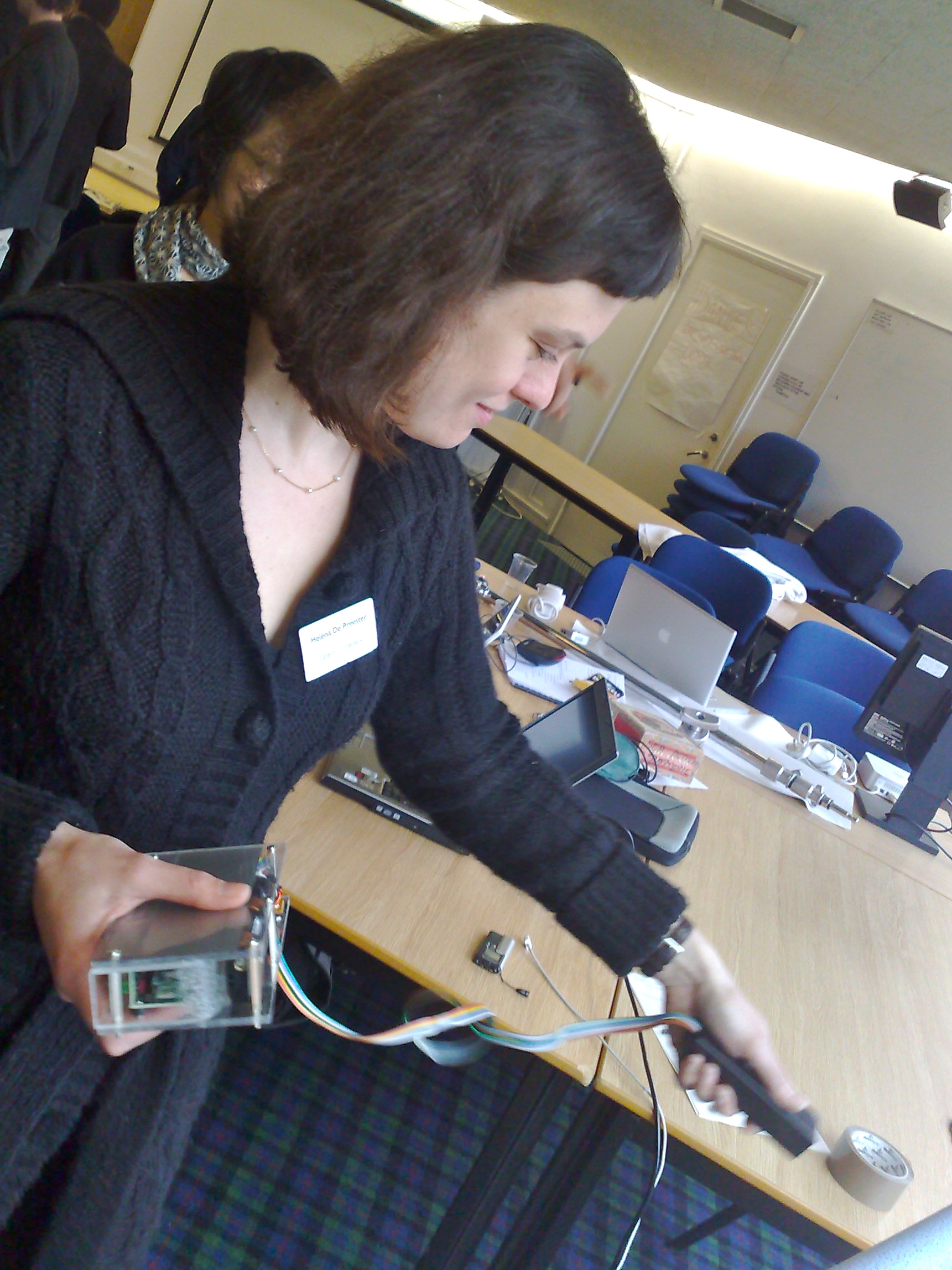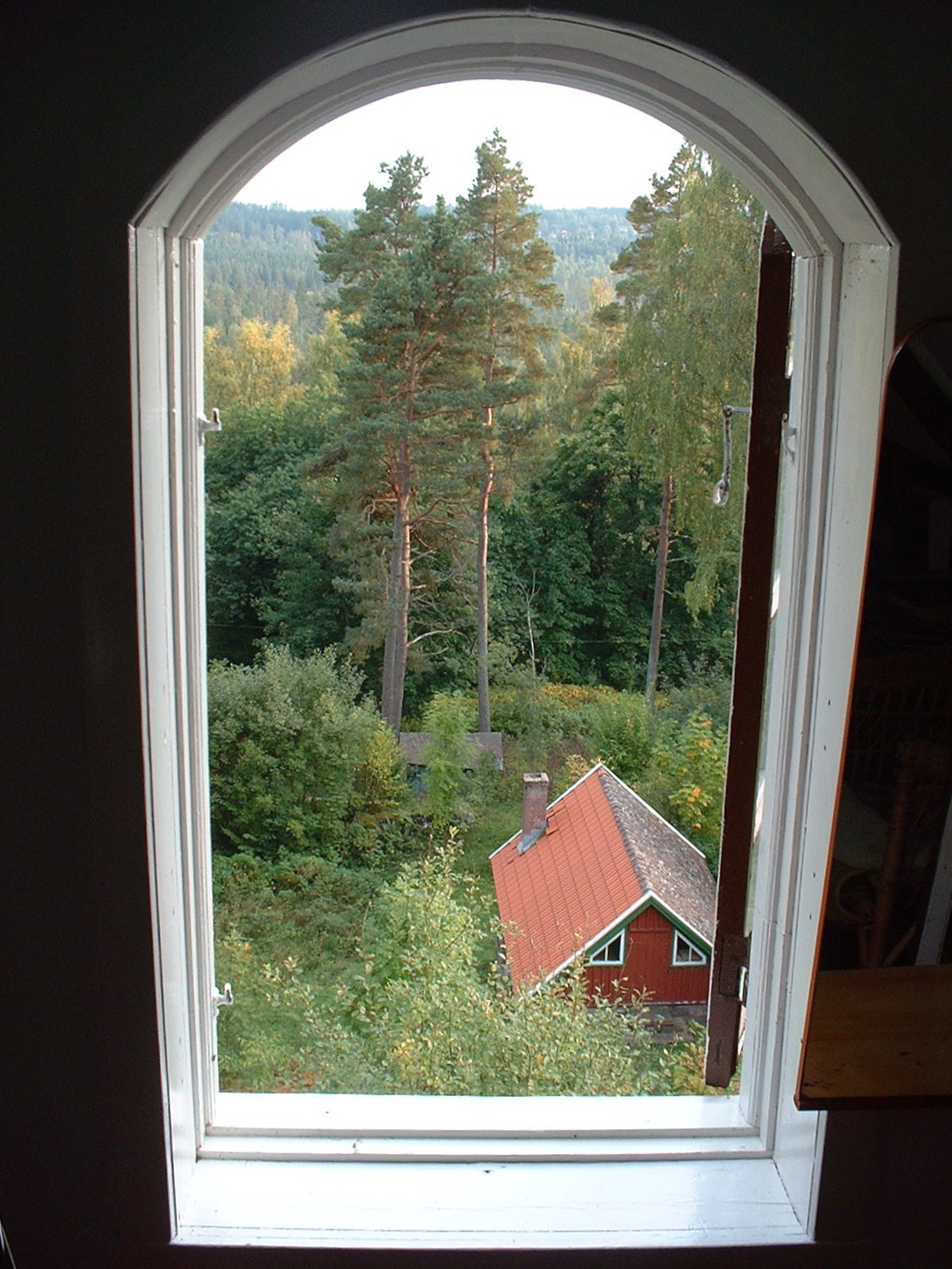
e*
Ron Chrisley
Lectures and writings by Ron Chrisley, on topics largely in the philosophy of cognitive science, in a variety of media (audio, video, PowerPoint, pdfs, txt).
Featuring PodSlide technology that allows you to view lecture slides at the same time as hearing the lecture, automatically, in-sync, on any device that plays video files - even your iPhone or iPod!
All episodes
Best episodes
Top 10 e* Episodes
Goodpods has curated a list of the 10 best e* episodes, ranked by the number of listens and likes each episode have garnered from our listeners. If you are listening to e* for the first time, there's no better place to start than with one of these standout episodes. If you are a fan of the show, vote for your favorite e* episode by adding your comments to the episode page.

11/12/13 • -1 min

In August of 2010 I gave two lectures as part of the annual Summer School of the Swedish Graduate School in Cognitive Science (SweCog; see http://www.swecog.se/summerschool.shtml). I was invited to speak on the topic "Cognition (or Consciousness) and Non-Conceptual Content", so I devoted the first lecture to getting clear on the nature of concepts. This allowed me to contrast conceptual content (which is, briefly: content that is articulable, recombinable, rational and deployable) with non-conceptual content, which was detailed in the second lecture (to follow).
Media:


IULM University, Milan, hosted a European Science Foundation Exploratory Workshop on "Neuroesthetics: When art and the brain collide" on the 24th and 25th of September, 2009. In my invited lecture, I departed significantly from my advertised title, instead using my time to introduce the audience to five strands in my research related to the intersection of neuroscience/cognitive science and art/creativity:
- Embodied creativity
- Enactive models of experience
- Synthetic phenomenology
- Interactive empiricism
- Art works/installations
Media:
- PodSlides: iPod-ready video (.mp4; 27 MB; 33 min 55 sec)
- Audio (.mp3; 15.6 MB; 33 min 51 sec)
- PowerPoint file (.pptx; 1.5 MB)
Further links:
- Workshop description
- Official workshop report
- "Beauty and the Brain: The Puzzle": An account of the workshop by author Tim Parks in the New York Review of Books blog

05/23/06 • -1 min
Abstract:
In a recent paper (Bishop 2002), Bishop argues against computational explanations of consciousness by confronting them with a dilemma. On a non-causal or weakly causal construal of computation, familiar arguments from Putnam and Searle reveal computation to be too observer-relative to be able to underwrite any law-involving explanation of consciousness. On a (much more plausible) strongly causal notion of computation (Chalmers 1994; Chalmers 1996; Chrisley 1994), computational explanations must advert to non-actual, counterfactual states and state transitions. Working this fact into versions of Fading Qualia and Suddenly Disappearing Qualia arguments, Bishop concludes that strongly causal computationalism cannot be physicalist, in that it maintains that two states may differ only their non-physical (i.e. counterfactual) properties and yet be phenomenally distinct. I rebut this argument by embracing the second horn, and denying that appeal to non-actual or counterfactual properties is at odds with physicalism; indeed, it is the lifeblood of normal, physical, causal explanation. I further cast doubt on the argument by showing that it is too strong; if it is correct, computational states could not explain anything at all, not even computational phenomena, let alone conscious experience. I show how computational states that differ in their counterfactual properties must, contra Bishop's characterization, differ with respect to some of their actual properties. However, I note that inter-dependencies between current experience and computational state may only be explicable by reference to explicit, counterfactual states rather than the occurrent physical states which realize those dispositional properties. This is shown to cohere with at least one understanding (Chrisley 2004) of the sensorimotor contingency theory of perceptual experience (O'Regan and Noe 2000), in which expectation is understood as a disposition to produce a computational state corresponding to the sensation one would have if one were to perform a particular action. I conclude by sketching some implications for the search for correlates of experience. The considerations arising out of Bishop's argument show that if computationalism is true, then the search for correlates will fail if it only considers occurrent non-dispositionally construed physical states at a time to be the possible correlates of the experience being had at that time.
References:
- Bishop, J.M. (2002) "Dancing With Pixies", in Preston, J. & Bishop, J.M., (eds), Views into the Chinese Room, pp. 360-379, Oxford University Press.
- Chalmers, D.J. (1994) "On Implementing a Computation", Minds and Machines, vol.4, pp.391-402.
- Chalmers, D. (1996) "Does a Rock Implement Every Finite-State Automaton?", Synthese, vol.108, pp.309-333.
- Chrisley, R. (1994) "Why Everything Doesn't Realize Every Computation," Minds and Machines 4:4, pp 403-420.
- Chrisley (2004) "Perceptual Experience as the Mastery of Sensorimotor Representational Contingencies", abstract in Proceedings of Towards a Science of Consciousness 2004, p 119.
- O'Regan, K., and Noe, A. (2001) "A Sensorimotor Account of Vision and Visual Consciousness", Behavioral And Brain Sciences 24(5).
Media:

11/13/13 • -1 min
 Last Friday (June 23rd), as part of the 10th meeting of the Association for the Scientific Study of Consciousness in Oxford, Igor Aleksander, Murray Shanhan and I jointly offered a tutorial on machine consciousness. I started with a discussion of general philosophical issues, the approach of Aaron Sloman and myself, and Pentti Hakonen's model. Igor Aleksander followed with a description of his axiomatic approach, a demo of his system in action, and a quick survey of the work Franklin and Baars, and Krichmar and Edelman. Murray Shanahan took the third hour with a description of his own approach, showing how it unifies the Global Workspace approach of Baars with the Simulation Hypothesis approach of Cotterill and Hesslow. He also described Holland's approach, showing the latest videos of his spooky robot Cronos.
Last Friday (June 23rd), as part of the 10th meeting of the Association for the Scientific Study of Consciousness in Oxford, Igor Aleksander, Murray Shanhan and I jointly offered a tutorial on machine consciousness. I started with a discussion of general philosophical issues, the approach of Aaron Sloman and myself, and Pentti Hakonen's model. Igor Aleksander followed with a description of his axiomatic approach, a demo of his system in action, and a quick survey of the work Franklin and Baars, and Krichmar and Edelman. Murray Shanahan took the third hour with a description of his own approach, showing how it unifies the Global Workspace approach of Baars with the Simulation Hypothesis approach of Cotterill and Hesslow. He also described Holland's approach, showing the latest videos of his spooky robot Cronos.Some general information about the tutorial can be found at http://www.assc10.org.uk/workshops.html#A1.
Media:
- PodSlides:iPod-ready video (.mp4; 40.5 MB; 47 min 25 sec)
- audio (.mp3; 21.7 MB; 47 min 26 sec)
- Powerpoint file (.ppt; 280 KB)
- "Virtual Machines and Consciousness" (.pdf; 232 KB), a paper by Aaron Sloman and myself from the Journal of Consciousness Studies, that is the basis of the second part of my presentation.

11/14/13 • -1 min
And a dog can dream; should it be implausible
That a man might supervise
The construction of light?"
– Adrian Belew
Yesterday I gave a keynote lecture at Beyond AI 2013: Aritficial Golem Intelligence, in Pilsen, Czech Republic. As I explained at the beginning of the talk, I adopted a broadcast (many topics covered lightly), rather than my usual narrowcast (a single topic covered in depth, with arguments!), strategy.
My apologies for the sound: there were technical difficulties with the microphones at several points.
Abstract:
Approaching artificial general intelligence (AGI) from the perspective of machine consciousness (MC), I will briefly address as many of the topic areas of the conference as possible within the time allotted:
- The mind is extended, but Otto's beliefs are not in his notebook; Prosthetic AI vs AGI (Nature of Intelligence)
- Scepticism about MC and the threat of atrocity (Risks and Ethical Challenges)
- Theodicy, the paradox of AI, and the Imago Dei; Naturalising the Spiritual (Faith in AGI)
- Narrative, dreams and MC; Herbert's Destination Void as research programme (Social and Cultural Discourse)
- How to fix GOFAI; the Mereological Constraint on MC (Invoking Emergence)
- Artificial creativity as embodied seeking of the subjective edge of chaos (AI and Art)
Media:
• Streaming video (hosted externally)
• Slides (.pdf)

11/12/13 • -1 min

Helena de Preester using the Enactive Torch
On Thursday the 26th and Friday the 27th of March, 2009, the e-sense project hosted the Key Issues in Sensory Augmentation Workshop at the University of Sussex. I was invited to speak at the workshop; my position statement (included below) serves as a good (if long) summary of my talk.
Media:
- PodSlides: iPod-ready video (.mp4; 19.3 MB; 26 min 25 sec)
- Audio (.mp3; 11.7 MB; 25 min 21 sec)
- PowerPoint file (.ppt; 696 KB)
- Position statement (.pdf; 78 KB)
Sensory Augmentation, Synthetic Phenomenology & Interactive Empiricism: A Position Statement
How can empirical experiments with sensory augmentation devices be used to further philosophical and psychological enquiry into cognition and perception?
The use of sensory augmentation devices can play a crucial role in overcoming conceptual roadblocks in philosophy of mind, especially concerning our understanding of conscious experience and perception. The reciprocal design/use cycle of such devices might facilitate the kind of conceptual advance that is necessary for progress toward a scientific account of consciousness, a kind of advance that is not possible to induce, it is argued, through traditional discursive, rhetorical and argumentative means.
It is proposed that a philosopher's experience of using sensory augmentation devices can play a critical role in the development of their concepts of experience (Chrisley, Froese & Spiers 2008). The role of such experiences is not the same as the role of say, experimental observation in standard views of empirical science. On the orthodox view, an experiment is designed to test a (propositionally stated) hypothesis. The experiences that constitute the observational component of the experiment relate in a pre-determined, conceptually well-defined way to the hypothesis being tested. This is strikingly different from the role of experience emphasized by interactive empiricism (Chrisley 2010a; Chrisley 2008), in which the experiences transform the conceptual repertoire of the philosopher, rather that merely providing evidence for or against an empirical, non-philosophical proposition composed of previously possessed concepts.
A means of evaluation is need to test the effectiveness of the device with respect to the goals of interactive empiricism and conceptual change. Experimental philosophy (Nichols 2004) looks at the way in which subjects' philosophical views (usually conceived as something like degree of belief in a proposition) change as various contingencies related to the proposition change (e.g., how does the way one describes an ethical dilemma change subjects' morality judgements of the various actions in that situation?; cf, e.g. (Knobe 2005)). One could apply this technique directly, by empirically investigating how use of sensory augmentation devices affect subjects' degree of belief in propositions concerning the nature of perceptual experience. However, it would be more in keeping with the insights of interactive empiricism if such experiments measured behaviour other than verbal assent to or dissent from propositions, such as reaction times and errors in classification behaviour. This might allow one to detect changes in subjects' conceptions of the domain that are not reportable or detectable by more propositional, self-reflective means.
Are there rigorous techniques that can characterise the subjective experience of using sensory augmentation technology?
Synthetic phenomenology is 1) any attempt to characterize the phenomenal states possessed, or modelled by, an artefact (such as a robot); or 2) any attempt to use an artefact to help specify phenomenal states (independently of whether such states are possessed by a naturally conscious being or an artefact) (Chrisley 2009; Chrisley 2010b; Chrisley 2008). Although "that" clauses, such as “Bob believes that the dog is running”, work for specifying the content of linguistically and conceptually structured mental states (such as those involved in explicit reasoning, logical thought, etc.), there is reason to believe that some aspects of mentality (...

11/12/13 • -1 min

As explained in the previous post, in August of 2010 I gave two lectures as part of the annual Summer School of the Swedish Graduate School in Cognitive Science (SweCog; see http://www.swecog.se/summerschool.shtml). The previous post contains the first of these lectures; this is part two. Near the end I showed a movie as a kind of dynamical specification of the non-conceptual content of visual experience modeled by the SEER-3 robot. This movie is not included in the PodSlide file; those interested in seeing it should download the supplementary file: "Non-conceptual content specification demo".
Media:

11/12/13 • -1 min

On November 11th, 2008, I gave a talk at the Royal Academy of Engineering as a part of the 2008 Workshop on Philosophy and Engineering. In the talk, entitled "Engineering For Conceptual Change: The Enactive Torch", I presented work done with Tom Froese at Sussex and Adam Spiers at Bristol.
Abstract: In the Philosophy and Engineering community, there is general agreement that interaction between the two fields can be mutually beneficial. However, there are distinctive ways in which engineering can play a crucial role in assisting the particular case of philosophy of mind, especially concerning our understanding of conscious experience and perception. The reciprocal design/use cycle of certain kinds of experience-augmenting technologies can facilitate the kind of conceptual advance that is necessary for progress toward a scientific account of consciousness, a kind of advance that is not possible to induce, it is argued, through traditional discursive, rhetorical and argumentative means. We present an example of engineering activity that plays this crucial role in informing philosophical research in the PAICS group at the University of Sussex: the design and use of a novel sensory substitution device (the Enactive Torch) as a means of inducing in the user new philosophical concepts of perceptual experience.
Media:

11/12/13 • -1 min

This lecture, given at the University of Skövde on October 19th, 2006, is an extended version of one I gave in Laval in May ("In defense of transparent computationalism"). The main additions are examples of how the transparent reading of computationalism can save it from some standard anti-computationalist arguments (Gödelian, externalist, dynamical, Chinese room), and mention of the work of Bill Bigge at Sussex as an illustration of how Strong AI might be possible, even if computationalism is false.
I botched an example in the talk, but rectified matters during discussion. The question I meant to ask was "Is the nth sitting-down person's answer to this question not "yes"?", where the only permitted responses are "yes" and not answering. As a standing up person, I can answer this question correctly for all n, while no sitting-down person can (they must not answer when considering their own case).
Media:

11/12/13 • -1 min
Show more best episodes

Show more best episodes
FAQ
How many episodes does e* have?
e* currently has 18 episodes available.
What topics does e* cover?
The podcast is about Mind, Society & Culture, Ai, Creativity, Research, Natural Sciences, Intelligence, Podcasts, Consciousness, Brain, Science, Philosophy and Academic.
What is the most popular episode on e*?
The episode title 'The Construction of Light' is the most popular.
What is the average episode length on e*?
The average episode length on e* is 1 minutes.
When was the first episode of e*?
The first episode of e* was released on May 23, 2006.
Show more FAQ

Show more FAQ

